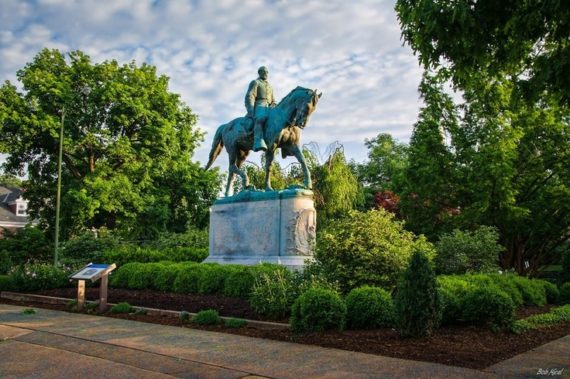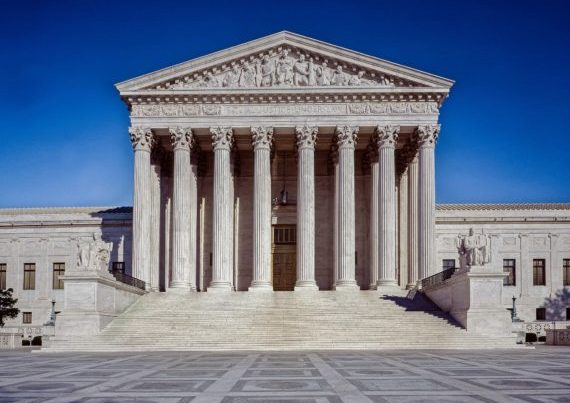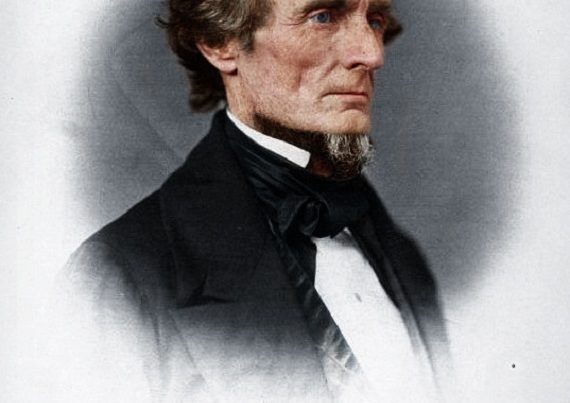The latest Crusade of the Progressives and other Politically Correct to remove all Confederate monuments from the face of the earth reminds me of a recent article by one Patricia Sullivan from the Washington Post concerning the Confederate statue in Alexandria, Virginia, and the Alexandria City Council’s unanimous vote to relocate it. The article also noted that others spoke with passion about the need for Alexandria to own up to its past. One assumes they were referring to Southern slavery. No one denies that fact, for which the South is being eternally castigated and is never allowed to forget. What more is there for the South to do? Roll in the dust? Rend her garments? Wear sackcloth and ashes? Sit upon stools of everlasting repentance? Beg forgiveness from the Black Caucus and the New England Pharisees?
Alexis de Tocqueville – an impartial observer of Democracy in America in the 1830s – did not blame the slaveholders as much as he did the slave traders who brought them into the New World in the first place, and who were like the drug dealers to the drug addicts today. Who were these dealers in the African Slave-trade? In ancient times, Egyptians pushed southwards up the Nile into the Sudan (“Land of the Blacks”) for slaves, and the Hebrews practiced slavery and Slave-trading under their Slave Code found in Leviticus, Chapter 25. Later, Muslim Arab slavers pushed into the interior of Africa for slaves. At the beginning of the Age of Exploration, the Portuguese – pushing down the west coast of Africa – found slave markets already in operation. In his book Anthropology: The Study of Man, the Anthropologist E. Adamson Hoebel gives figures showing that even in the twentieth century Africa was still the home of slavery, with it being practiced in two-thirds of the cultures south of the Sahara. Perhaps it is time for the Jews, the Muslims and the Africans to own up to their past – and/or present, as the case may be!
The pious New Englanders got in on it early. They had tried enslaving the Native Americans, but with poor success, so they sold them into the Caribbean – but thereby discovered the profits to be had in Slave-trading. When slavery proved unprofitable in the industrial North, they sold their slaves South before their Abolition Laws went into effect – prohibiting not only Black slavery but in some cases Black residency there as well. But they did not give up African Slave-trading. According to the noted Black educator W. E. B. DuBois, in his book The Suppression of the African Slave-trade to the United States, the first slave ship in the thirteen colonies was built in Boston around 1635. According to the January 1862 issue of the New York Journal of Commerce, Boston and New York were the largest African Slave-trading ports in the world, trading with Cuba and Brazil. According to the book Complicity: How the North Promoted, Prolonged, and Profited from Slavery, (written by three writers from the Hartford Courant), the founder of Brown University, when criticized about his African Slave-trading, is reported to have said that there was no more crime in bringing off a cargo of slaves than in bringing off a cargo of jackasses. Isn’t it about time for sanctimonious New England to own up to its past?
In the 1930s, near Mobile, Alabama, the noted Black anthropologist Zora Neale Hurston interviewed Cudjo Lewis, the last known living individual to have arrived in the United States aboard a slave ship – smuggled into a swamp along the Gulf Coast just before the war. The account is found in her book Dust Tracks on a Road, pages 206-12. Lewis told how when he was a young man his African village had been raided by Black slavers and fierce Amazon women warriors from the Kingdom of Dahomey. They killed all the old people and cut off their heads as trophies, while the rest were shackled into coffles and marched to the barracoons on the beach for sale. Along the way, the severed heads started to rot, so the slavers stopped to smoke and dry the heads over a fire. Upon their arrival on the coast, they found the compound of the King of Dahomey surrounded by a wall of skulls, and with skulls stuck on the tops of the posts of the enclosing barricade. Arrangements for sale were made with a slave ship that was anchored offshore, and Cudjo and the other slaves were loaded aboard for the dreadful “Middle Passage.”
Zora Neale Hurston said that the shocking story dispelled her illusions. In her growing up, she had believed the tales told that white slavers arrived on the African coast, waved a red handkerchief, and captured the curious Africans who came out on the beach to see. She said she was shocked and dismayed to discover that Africans were captured and sold into slavery by her own people. Perhaps it is time for African-Americans to own up to this part of their past as well.
It was reported in the aforementioned Washington Post article that eighteen speakers testified in a chamber where a portrait of Robert E. Lee hangs opposite one of George Washington. Let us hold that thought, for it is a perfect justification of Alexandria’s – and the South’s – Confederate heritage, and a perfect indictment of those who would condemn it, for if the truth be known, both Lee and the Confederate soldiers commemorated on our monuments were defending their country from invasion, conquest and coerced political allegiance – just as Washington and their fathers had done when the thirteen slaveholding Colonies seceded from the British Empire.
Secession had many causes, but the war had only one. The historian Barbara Tuchman noted accurately and succinctly – somewhere in her book The March of Folly, from Troy to Vietnam – that it was “The North’s War against the South’s Secession.” With the agricultural South out of the Union the industrial North would suffer financial bankruptcy. It was therefore decided in Northern financial councils that to drive the Southern States back into the Union at the point of the bayonet in the bloodiest war in the history of the Western Hemisphere would be preferable to the loss of a Yankee dollar. However, one will not hear anything about this, because it repudiates our secessionist heritage of 1776 and puts the portrait of Abraham Lincoln on the wall alongside of George III. This, then, is the real reason these Confederate Monuments must come down: They speak Truth to Power.







